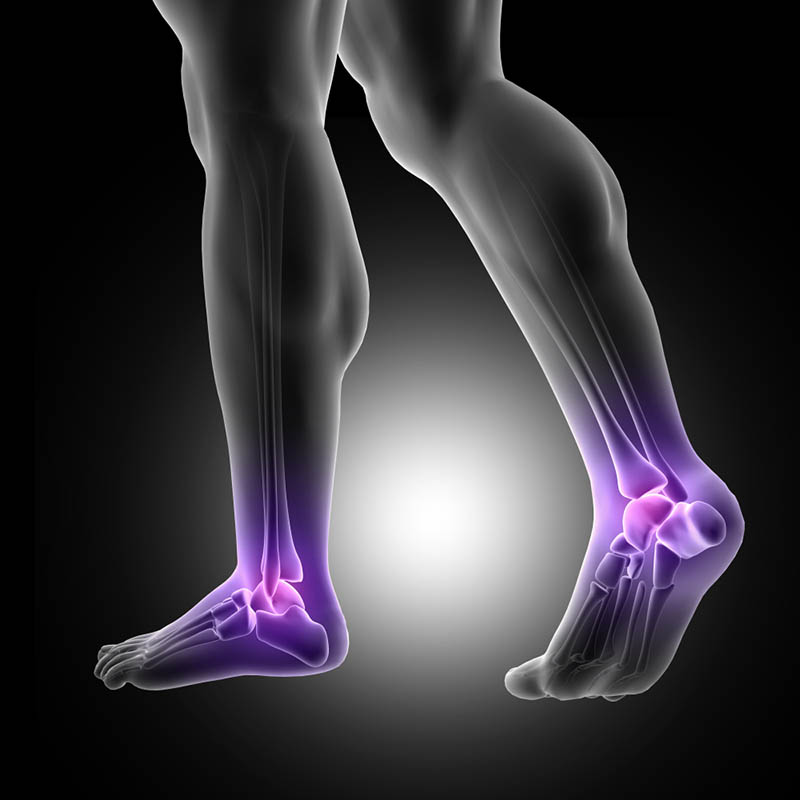An ankle dislocation is a painful and serious injury that happens when the bones in the ankle joint shift out of place. It can happen from sports injuries, falls, or accidents, and it often requires quick medical attention. Knowing the types, causes, symptoms, and treatment options can help prevent long-term complications and support a full …
An ankle dislocation is a painful and serious injury that happens when the bones in the ankle joint shift out of place. It can happen from sports injuries, falls, or accidents, and it often requires quick medical attention. Knowing the types, causes, symptoms, and treatment options can help prevent long-term complications and support a full recovery.
What Is an Ankle Dislocation?
An ankle dislocation happens when the bones that form the ankle joint—the tibia, fibula, and talus—are forced out of their normal positions. This injury usually results from high-impact trauma such as car accidents, falls, or athletic activities. It’s often accompanied by ligament tear, swelling, bruising, and severe pain.
Understanding the Joint and How It Becomes Dislocated
The ankle joint is made up of three main bones: the tibia, fibula, and talus. These bones work together to support body weight and allow foot movement. In a dislocation, the joint experiences abnormal separation, which disrupts the anatomic relationship between these bones. High-impact forces like an axial loading injury or twisting motion can cause the bones to shift, leading to joint dislocation and possible ligament damage. Patients with genetic conditions such as Ehlers-Danlos Syndrome, Marfan Syndrome, or Down Syndrome may have a higher risk due to ligament laxity.
What Happens During a Dislocation?
When an ankle dislocation occurs, the bones are completely separated, and the ligaments are often torn. Surrounding structures like tendons, nerves, and blood vessels may also be injured. This results in swelling, deformity, pain, and sometimes nerve damage or skin complications. If the bone pokes through the skin, it’s called an open dislocation and requires emergency surgery. Post-reduction X-rays are critical to assess joint alignment and rule out unstable fractures or pilon injury.
Ankle Dislocation vs Ankle Fracture Dislocation
While a pure dislocation doesn’t involve broken bones, many ankle dislocations include fractures. This is called an ankle fracture dislocation, which may require both joint realignment and fixation of the broken bones. Unlike a sprain, an ankle fracture dislocation can cause a complete loss of joint stability and may need surgical procedure. The team at Wisconsin Foot & Ankle Clinic provides expert care for such complex injuries, offering comprehensive Fractured Ankle Treatment in Wisconsin to ensure optimal healing and long-term stability.
Injuries like ankle fractures can result from various traumatic forces such as twisting movements, direct impacts, or crush injuries. Common scenarios include slipping, falling, or twisting the ankle during sports, which can apply excessive stress through the joint. When these forces are severe, they can cause dislocation or fracture, often requiring prompt evaluation by an orthopedic or ankle specialist.

Types of Ankle Dislocation
There are several types of ankle dislocation, and understanding them helps guide treatment. The classification is based on the direction in which the talus bone shifts. Each type has different causes and levels of severity.
Posterior Ankle Dislocation
This is the most common type, where the talus shifts backward behind the tibia. It often results from falls or athletic injuries where the foot is planted, and a force pushes the shin forward. It may be accompanied by fractures, tendon damage, or skin tenting, requiring quick clinical diagnosis and CT scan.
Anterior Ankle Dislocation
In this less common form, the talus is forced forward out of the ankle mortise. This may happen from a strong blow to the back of the leg or foot during car accidents. Proper footwear and prophylactic ankle wrapping may help reduce risk.
Lateral, Medial, and Superior Dislocations
- Lateral dislocation: Occurs when the talus moves outward. Commonly seen with inversion injuries or recurrent sprained ankles.
- Medial dislocation: The talus shifts inward. This type is often associated with ligament tear and sports injuries.
- Superior dislocation: Extremely rare. It occurs when the talus is driven upward between the tibia and fibula due to an axial load, often from a fall from height.
Open vs Closed Ankle Dislocation
- Open dislocation: The bone breaks through the skin. It carries a high risk of infection and requires emergency operation and careful infection control.
- Closed dislocation: The bone remains under the skin but still causes swelling, pain, and loss of range of motion. Both require fast realignment to preserve blood and nerve supply.
Causes and Risk Factors for Ankle Dislocations
Understanding what causes an ankle dislocation helps with prevention. It also provides insight into why some individuals are more prone than others.
Common Causes
- Sports injuries: Football, basketball, and other high-contact sports can cause ankle dislocation.
- Car accidents: A sudden stop or collision can exert massive force on the ankle joint.
- Falls or missteps: Particularly in older adults or individuals with obesity or arthritis of the joint.
Underlying Ankle Instability or Previous Injuries
People with a history of Types of Ankle Sprain, ligament injuries, or recurrent sprained ankles are more likely to experience dislocations. Weak peroneal muscles or anatomical anomalies can also contribute. Preventive strategies include prophylactic ankle wrapping, strength training, and activity modification.
Acute ankle fractures that accompany dislocations often lead to significant functional impairment. Pain, difficulty bearing weight, and impaired gait are common. Clinical assessment of ankle function may be delayed until swelling and guarding subside, allowing for a more accurate evaluation of stability and joint mobility.
Diagnosing and Evaluating Ankle Dislocations
Early and accurate diagnosis is critical when treating an ankle dislocation, especially to prevent complications like nerve damage, ligament instability, or long-term mobility loss. A detailed clinical exam and imaging tests help determine the type and severity of the injury. At Wisconsin Foot & Ankle Clinic, we offer same-day access to high-level diagnostic tools to ensure timely care.
Physical Exam and Imaging
During your initial evaluation, our ankle doctor will begin with a thorough physical examination to assess the position of the joint, check for deformity, bruising, and loss of range of motion, and evaluate pulses and sensation to ensure blood and nerve flow remains intact.
We then conduct on-site X-rays to confirm bone alignment and detect any ankle fracture. If soft tissue damage is suspected, a CT scan or MRI may be ordered to evaluate ligaments, tendons, and associated injuries in detail. This allows our team to make an accurate clinical diagnosis and create a tailored treatment plan. Post-reduction X-rays are also performed to verify proper joint alignment after repositioning.
Identifying Associated Injuries
Most cases of ankle dislocation involve more than one type of injury. Our team checks for fractures, tendon damage, and ligament tears that often accompany dislocations, especially in ankle fracture dislocation cases. Recognizing these early reduces the risk of chronic instability, arthritis, or poor joint function.
In some instances, we may identify nerve or artery damage, skin tenting, or swelling that calls for urgent intervention. For complex injuries, we coordinate orthopedic or podiatric consultation and provide emergency operation referrals when needed. Accurate detection of these complications helps support a smoother recovery.

Treatment Options for Ankle Dislocations
When you experience an ankle dislocation, fast and effective treatment can protect your long-term mobility. At Wisconsin Foot & Ankle Clinic, we evaluate the severity and use a step-by-step approach to provide appropriate care. Whether your injury requires nonsurgical management or operative correction, we offer both options.
Emergency Management and Joint Realignment
If you arrive shortly after the injury, our priority is to stabilize the joint and manage your pain. This typically includes immobilization with a splint or temporary plaster or fiberglass splint, closed reduction to realign the bones, and pain medicines. For open dislocations, infection control is essential before and after surgery.
We may use cold packs, elevation, or assistive devices such as crutches or a knee scooter to keep pressure off the injured limb. Early intervention supports blood and nerve supply, minimizes swelling, and prevents skin complications.
Ankle Fracture Dislocation Management
When a dislocation is paired with a fracture, it becomes an ankle fracture dislocation, which often needs a more intensive approach. Surgical procedures may be needed to stabilize the bones using fixation devices like plates or screws.
Our team offers both conservative therapy when appropriate and surgical intervention when necessary. We monitor healing closely through follow-up care and periodic imaging to ensure bones and tissues are properly aligned and healing as expected.
Surgical vs Nonsurgical Care
The choice between surgery and conservative management depends on the severity of the dislocation, presence of soft tissue injuries, and post-reduction stability. For simple dislocations without fractures, cast immobilisation, removable brace, and activity modification may be sufficient.
When unstable fractures, tendon rupture, or joint misalignment occur, surgery may be the best option for a full recovery. At our clinic, our ankle specialist near you ensures patients are guided through the pros and cons of each method and supported with personalized treatment plans.
Ankle Dislocation Recovery Time and What to Expect
Recovering from an ankle dislocation takes time and patience. Following a clear timeline and sticking to rehab protocols can restore function and reduce your risk of complications. Whether you had a simple dislocation or an ankle fracture dislocation, recovery goals will vary.
Immediate Recovery Timeline
In the first 2–4 weeks after injury, most patients remain non-weight-bearing using crutches, a cane, or a splint to support healing. At 6–8 weeks, gradual weight-bearing may begin with guidance from your doctor and the help of a removable brace or boot.
By 2–3 months, structured rehabilitation begins. During this phase, you work to regain range of motion, strength, and stability in the ankle. Pain management and follow-up exams ensure the joint heals correctly and that no further intervention is needed.
Long-Term Healing and Return to Activity
If you experienced an ankle dislocation with fracture, recovery may take longer, sometimes 4–6 months or more. Factors such as obesity, arthritis, or poor rehabilitation compliance can extend the healing period.
Returning to sports or full activity requires clearance from your ankle doctor, especially if you’ve had surgery. Some patients may need longer-term support like orthotics or ankle bracing to reduce stress on the healing joint and prevent reinjury.
Physical Therapy and Rehabilitation
Whether or not you undergo surgery, physical therapy is essential to restore your pre-injury level of function. Therapy focuses on proprioception, strengthening the peroneal muscles, and correcting any lingering mobility issues.
While Wisconsin Foot & Ankle Clinic may refer you to an outside provider for physical therapy, we coordinate your rehab plan and monitor milestones. Rehabilitation ensures that even after a major dislocation, patients can return to walking, working, and even sports with improved strength and stability.
Preventing Future Dislocations and Complications
An ankle dislocation is a serious injury, but taking the right steps after healing can help reduce the risk of future problems. Many patients return to daily activities or sports, but reinjury is always a possibility without the right care. At Wisconsin Foot & Ankle Clinic, we focus on long-term prevention and personalized recovery strategies.
When Reinjury Is a Risk
After an ankle fracture dislocation, the joint may be more prone to instability or loss of range of motion. Patients involved in athletic activities, those with obesity, or with conditions like Ehlers-Danlos Syndrome may be at higher risk for repeat injuries.
To prevent reinjury:
- Wear proper footwear that supports the ankle and reduces excess motion.
- Use assistive devices like an ankle brace or orthotics during physical activity.
- Work with your doctor to modify high-risk activities and monitor range of motion and strength over time.
Warning Signs of Improper Healing
If your ankle dislocation doesn’t heal properly, you may experience signs of chronic dysfunction. These include:
- Persistent swelling or bruising after several weeks
- Numbness, tingling, or trouble moving your ankle
- Repeated ankle rolling, suggesting chronic instability
Other red flags include skin complications, pain that doesn’t improve, or a sense that your ankle is “giving out.” Early follow-up with an ankle specialist near you is key to preventing long-term issues like arthritis, nerve damage, or joint deformity.

Why Choose Wisconsin Foot & Ankle Clinic in Brookfield, WI
Selecting the right provider for your ankle dislocation treatment can make all the difference in your recovery and long-term health. At Wisconsin Foot & Ankle Clinic, our approach is based on precision, compassion, and trusted expertise. Whether you’re recovering from an injury or seeking a second opinion, our team is here to help.
Expertise in Treating Ankle Fractures and Dislocations
Dr. Donald T. McDonald and our clinical team specialize in managing complex ankle trauma, including ankle fracture dislocation and ligament injuries. With years of experience in orthopedic emergencies, we’re equipped to guide patients through every phase of care—from closed reduction to surgical procedure to rehabilitation.
If you’re searching for an ankle doctor who understands both acute injury and long-term joint function, our clinic offers unmatched local expertise. We understand how injuries impact your life and work to restore your pre-injury level of function.
Advanced Diagnostic and Treatment Capabilities
Our facility features on-site X-ray, and coordination for CT scans or MRI scans when deeper insight is needed. We evaluate for fractures, ligament damage, and other associated injuries with precision.
Because ankle joint reduction, post-op monitoring, and long-term care are available in one location, you avoid unnecessary delays and referrals. Patients seeking complete care for ankle sprain, dislocation, or fracture can rely on us for a full range of diagnostic and treatment options.
Local Access to Expert Care and Personalized Treatment Plans
Many patients search online for an ankle specialist near me and are pleased to find a compassionate, comprehensive clinic right here in Brookfield. We treat every case with a personalized approach, offering support for activity modification, physical therapy referrals, and long-term joint care.
Our care doesn’t stop after the first visit — we provide detailed education, explain surgical vs nonsurgical care options, and help prevent future injuries. That’s why so many in our community trust Wisconsin Foot & Ankle Clinic for foot and ankle injuries of all kinds.
Conclusion
An ankle dislocation is more than just a painful event — it’s a serious injury that requires expert evaluation and care. By understanding the types of dislocations, their causes, treatment options, and recovery expectations, you can better protect your mobility and health.
At Wisconsin Foot & Ankle Clinic, we specialize in helping patients recover fully and prevent future problems. Whether you’ve experienced a dislocation or are recovering from an ankle fracture dislocation, our team is here to support you with personalized care every step of the way.
FAQs
Can you still walk with a dislocated ankle?
Walking on a dislocated ankle is not recommended. The injury usually causes severe pain, swelling, and joint deformity, making it unsafe and potentially harmful to try bearing weight. Immediate medical care is necessary to avoid nerve or artery damage and long-term complications.
How do you fix a dislocated ankle?
Treatment involves closed reduction to realign the bones, followed by immobilization with a splint or removable brace. Depending on the severity, surgical intervention may be required, especially in cases of ankle fracture dislocation. After realignment, patients typically undergo rehabilitation and may require assistive devices like crutches or a knee scooter during recovery.
What does a subluxed ankle feel like?
A subluxation, or partial dislocation, may cause instability, tenderness, swelling, and a sensation that the ankle is “slipping” or not supporting weight properly. Unlike full dislocation, it might be less painful initially but can still lead to chronic issues if untreated. If you suspect a subluxed ankle, schedule an evaluation with an ankle doctor to prevent further injury.






